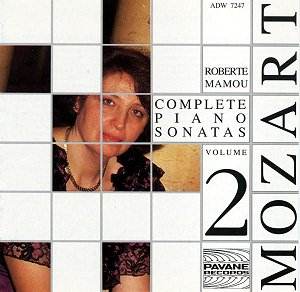 Composer: Wolfgang Amadeus Mozart
Composer: Wolfgang Amadeus Mozart
Works: Piano Sonatas K279, K280, K281, K282, K283, K284, K309, K310, K311, K330, K331, K332, K333, K457, K533, K545, K570, K576
Performers: Klára Würtz, piano
Recording: Summer 1998, Maria Minor, Utrecht
Label: Brilliant Classics
Mozart’s piano sonatas, a cornerstone of the classical repertoire, embody the transition from the Baroque to the Classical style, showcasing both simplicity and complexity in their construction. This seventh volume in the Brilliant Classics complete Mozart edition presents these sonatas in their entirety, revealing the composer’s youthful exuberance and profound musicality. The collection spans a significant portion of Mozart’s early career, from the first sonata written at age 8 to the more mature works composed in his late twenties.
Klára Würtz, a Hungarian pianist known for her clarity and technical proficiency, endeavors to navigate the emotional landscape of these works. However, her interpretations often lack the depth and nuance that these pieces demand. For instance, in the opening Allegro of Piano Sonata No. 1 in C major, K279, while Würtz maintains a brisk tempo, the phrasing feels somewhat mechanical, devoid of the lyrical grace that characterizes Mozart’s style. A more expressive touch could have illuminated the underlying emotional currents, which are often obscured in her execution.
The technical aspects of Würtz’s playing are commendable; she tackles the rapid passages and intricate ornamentation with aplomb. Nevertheless, the performances occasionally suffer from a lack of cohesive musicality. The Adagio from the B-flat major sonata, K570, is a prime example—though the runs are executed cleanly, the emotional weight of the piece feels diluted, as if the music is being played “at” rather than “with” the listener. The absence of dynamic shading and careful articulation detracts from the inherent charm and poignancy of Mozart’s writing.
Sound quality plays an essential role in the overall impact of this recording. The piano employed, a Steinberg, appears to reside in an ambiguous sonic space, wavering between a fortepiano’s historical timbre and that of a modern instrument. This choice may have contributed to a somewhat sterile sound, lacking the warmth and character that one would expect from such intimate chamber works. Additionally, the recording exhibits a degree of reverb that may obscure the clarity needed to appreciate the intricate counterpoint and thematic development present in Mozart’s compositions.
When compared to interpretations by pianists such as Alfred Brendel or Mitsuko Uchida, Würtz’s performances feel more like a competent rendering rather than an inspired interpretation. These artists bring a wealth of interpretative insight that elevates the music beyond mere notes on a page. For instance, Uchida’s rendering of the Rondeau in K331 captures the playful spirit and contrasts within the movement, while Würtz’s approach remains more restrained, lacking the vibrant character that could enhance the listener’s experience.
The collection is commendable as an introduction to Mozart’s piano sonatas, encapsulating the breadth of his early works. While Klára Würtz demonstrates solid technical ability, the interpretations fail to resonate with the emotional depth and individuality that these sonatas inherently possess. The performances, while adequate for casual listening or early exploration, do not reach the heights of artistry found in more distinguished renditions. For those seeking a deeper engagement with Mozart’s genius, it is advisable to turn to recordings that offer a richer, more nuanced perspective on these beloved sonatas.



